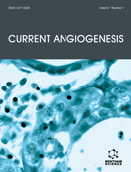Abstract
Angiogenesis is a natural process that occurs in under-perfused tissues in response to inflammation or low oxygen supply (activation of HIF). Cardiac angiogenesis remains an ultimate approach to avoid irreparable deterioration of cardiomyocytes. The two master angiogenic factors are the vascular endothelial growth factor (VEGF) and angiopoietin 1 and 2 (ANGPT1 and 2). While both VEGF and ANGPT2 are mainly involved in the initiation of angiogenesis, ANGPT1 is essential for the stabilization of the newly formed vessels. Here we review the available information on the role of macrophages and cardiomyocytes in cardiac angiogenesis. Myocardial ischemia leads to a local sterile inflammation that initiates angiogenesis. Both cardiac macrophages and cardiomyocytes have the ability to release angiogenic molecules (VEGF and/or ANGPT) in response to inflammation, ischemia or tissue damage. Bench-to-beside translation of the information obtained has involved delivery of angiogenic genes, growth factors, or stem cells to patients with coronary artery disease (CAD). Clinical trials using these approaches have been rather equivocal and underscore the need for further work in this area.
Keywords: Cardiac angiogenesis, cardiac macrophages, cardiac angiogenic therapy, cardiomyocytes.
Graphical Abstract
 25
25

